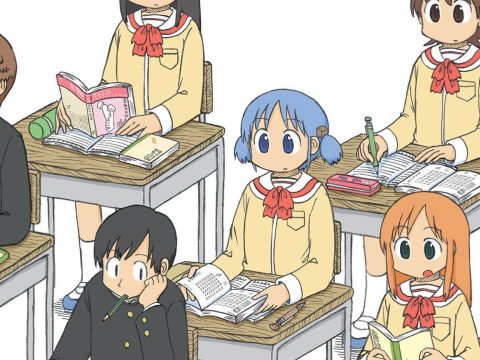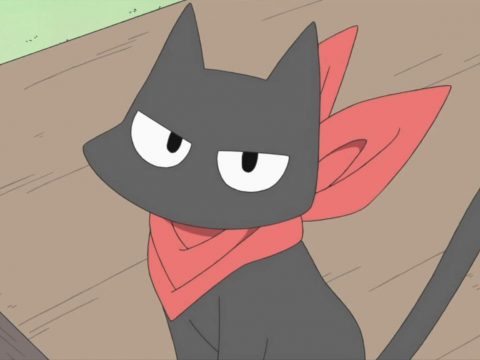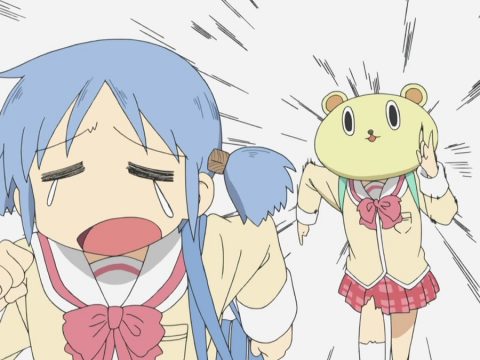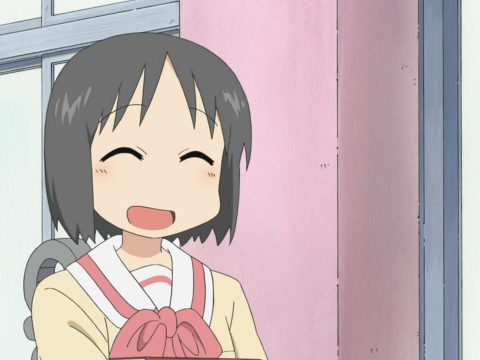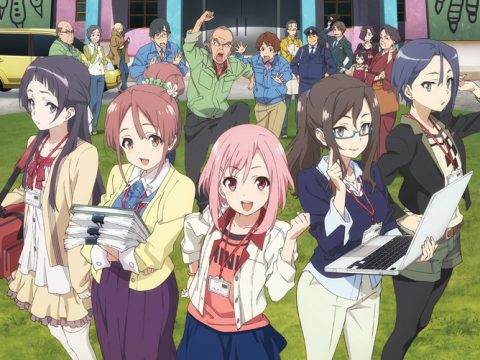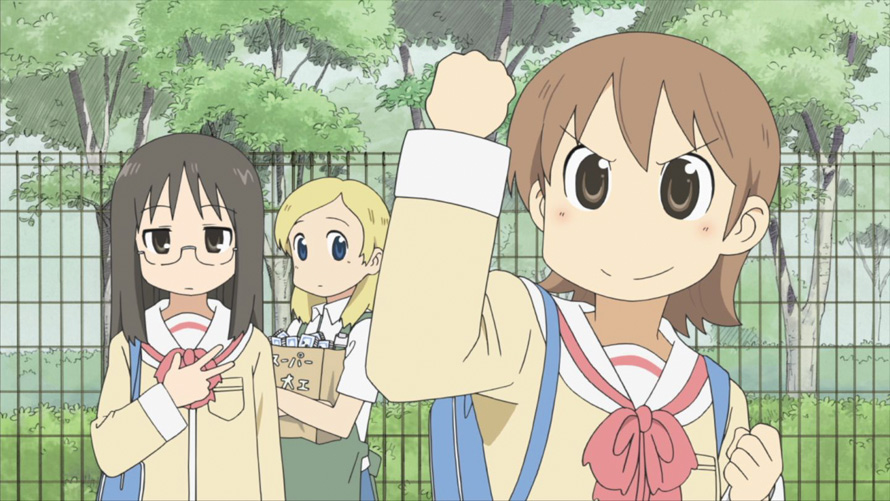
Nichijou is both a furiously energetic comedy and a simplistic and endearing display about the trials and tribulations of everyday life.
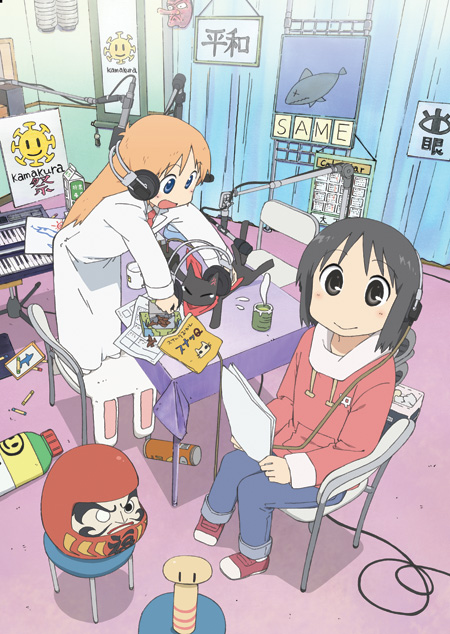 For an anime whose title roughly translates to mean “My Ordinary Life,” Nichijou, the 2011 spring adaptation of Keiichi Arawi’s popular slice-of-life/comedy manga, has a very different definition of “ordinary” in mind. Set in the fictional town of Tokisadame, the series, which is more a collection of skits than a linear narrative, follows the daily lives of such characters as Yuko Aioi, an energetic but clumsy girl to which all manners of bad luck seem to gravitate; Mio Naganohara, a passionate, budding “boys’ love” manga artist with anger issues that could give Bruce Banner a run for his money; and Mai Minakami, a soft-spoken girl with a habit of trolling her friends and whittling religious statues out of wood. Quirks aside, these are teenagers you’d find anywhere else; they forget their homework, they have crushes, they play games—pretty ordinary stuff.
For an anime whose title roughly translates to mean “My Ordinary Life,” Nichijou, the 2011 spring adaptation of Keiichi Arawi’s popular slice-of-life/comedy manga, has a very different definition of “ordinary” in mind. Set in the fictional town of Tokisadame, the series, which is more a collection of skits than a linear narrative, follows the daily lives of such characters as Yuko Aioi, an energetic but clumsy girl to which all manners of bad luck seem to gravitate; Mio Naganohara, a passionate, budding “boys’ love” manga artist with anger issues that could give Bruce Banner a run for his money; and Mai Minakami, a soft-spoken girl with a habit of trolling her friends and whittling religious statues out of wood. Quirks aside, these are teenagers you’d find anywhere else; they forget their homework, they have crushes, they play games—pretty ordinary stuff.
Of course, if you’re familiar with the series—and you’ve probably seen clips of it somewhere before—you already know that pretty much anything that happens in their lives is far from ordinary. In the first episode alone, we have someone getting hit in the head by a flying piece of salmon, tsundere Misato Tachibana shooting her crush—Kojiro Sasahara, a farmboy who acts like he’s the wealthiest man in town—in the head at point-blank range with a pistol, a fire alarm prank gone haywire, a schoolteacher who can’t stop sweating nervously, and the plight of grabbing the last octopus sausage being treated with all the gravitas of the final clash between Gohan and Cell. And all of this is just in the first episode!
On top of that, we also have the antics of the Shinonome Lab family: we have Nano, a teenage girl who happens to be a highly advanced robot with a large wind-up key sticking out of her back; Hakase, the eight-year-old supergenius who invented Nano; and Mr. Sakamoto, a cat that can talk thanks to a scarf that Hakase invented and is on the receiving end of a lot of Hakase’s antics. While Yuko, Mio, and Mai are the poster children for Nichijou, it’s actually Nano that lets you know what the series is all about; her first appearance is her stumbling down the street, bumping into a pedestrian, and causing an Evangelion-sized explosion that engulfs the whole town. But it’s not treated as a serious event, and it’s not even treated like a cliché in every shojo manga you’ve ever seen in your life; she is simply more concerned about her missing robot hand. Angst and drama are barely concepts in this universe, let alone basic human emotions.
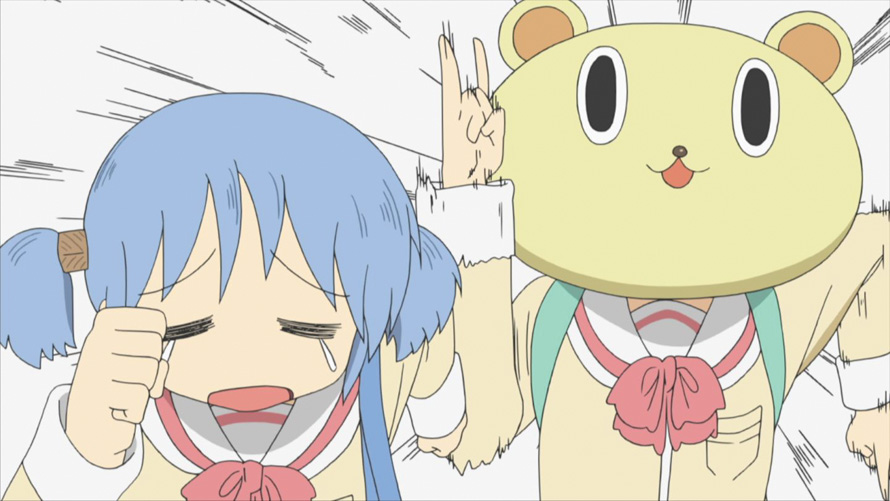
“Azumanga Daioh 2.0” is an appropriate and well-earned nickname for Nichijou. From top to bottom, it’s pure comedy, deploying a diverse army of humors: puns, wordplay, brick jokes, art shifts, delayed reactions, subversion, repetition, slapstick, surrealism, non sequiturs, anticlimax, exaggeration, vignettes, random surprises, sweeping orchestral music for mundane tasks, and even lighthearted musings about life and love are a part of Nichijou’s weaponry. While some of Nichijou’s jokes may fall flat without an understanding of Japanese culture, these are only minor misses in a never-ending barrage of hits. And its ability to flow almost seamlessly between its different forms elevates it to some kind of surrealist art show. Yet Nichijou’s humor can easily be organized into three distinct categories: (1) the presentation of an absurd situation, (2) reacting absurdly to a normal situation, and (3) Hakase simply being a child/genius and everyone’s reaction to her antics (i.e., Hakase hides a roll cake in Nano’s arm; Nano freaks out accordingly).
The first form is a straightforward setup—“Look at this weird thing!” is the primary train of thought (i.e., a high school principal wrestling a random deer). It’s the second form that tends to shine the most, and the show plays around with a diverse range of reactions. Sometimes it’s a dropped jaw, a furious fit, or a blank stare of contempt, but it’s ultimately all about the execution of artistic absurdity. When Yuko stabs herself with a pencil, simply screaming in pain isn’t enough; that scream is represented by a laser that shoots up into the sky and pierces multiple planets (and Pluto). There are plenty of meme-worthy faces and out-there expressions of shock, anger, sadness, joy, disappointment, and Lord knows what else.
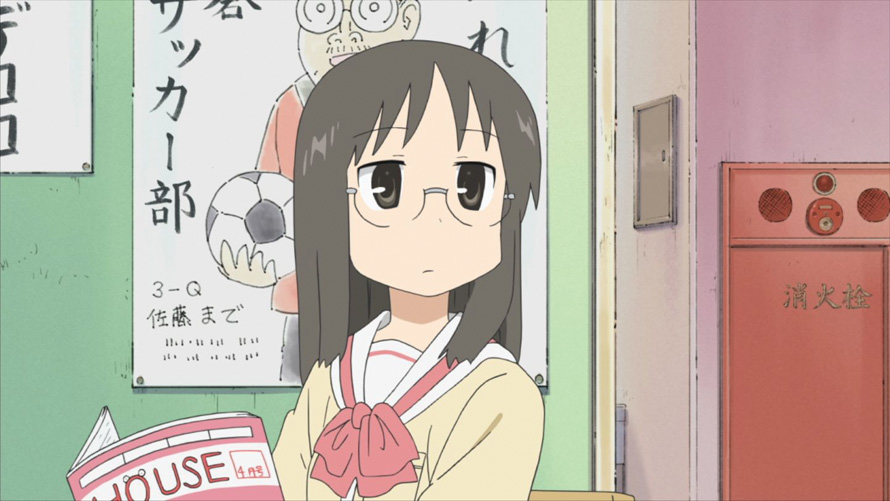
Lending to these (over)reactions is the breathtaking art and character animation, provided by the good folks at Kyoto Animation. With KyoAni at the wheel, the more low-key moments are simplistic yet lively, but the more absurd reactions require absurd animations (i.e., a whole different art style to represent shock or distress), and such execution makes it feel like the reaction is the punchline itself rather than the intended punchline. Arawi’s gags and art style are great on their own, but KyoAni successfully translates not just his colorful universe, but also his characters’ emotions too. Heck, even the music spices Nichijou’s universe with a colorful orchestra that can bring a good amount of fluff to an easygoing joke or employ all the gravitas of a fight to the death for something as mundane as building a house of cards.
Nichijou is, to a degree, economic with its fluid visuals. There are sequences that don’t exactly scream “madcap comedy” in terms of visual display—take most of the nonsense that goes down in the Shinonome household, or any scene that quietly observes the past—but then ideas like not letting someone see your drawings or getting rejected by your crush get these amazing visual sequences that wouldn’t be caught dead in a shonen anime.
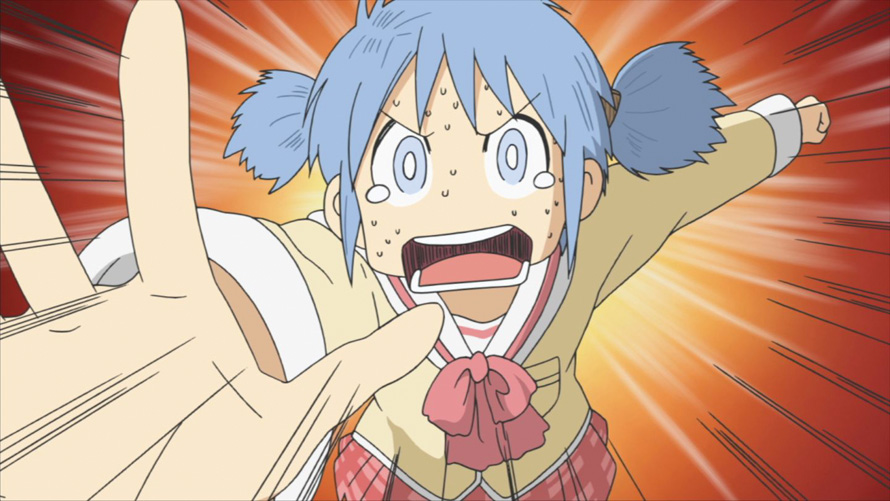
Although many people tend to put Nichijou in “slice-of-life” box of anime genres, there’s this feeling that the show can’t shake off, like it refuses to be just one thing. Slice of life—of course. Comedy—a total no-brainer. But what about the occasional splash of drama here and there; what about the moments that evoke of big action hits like Dragon Ball Z and Die Hard? And what about those random moments that are either purely meditative in language and form, almost poetic in a way (like the dog that keeps giving Yuko a reassuring paw in times of trouble) or simple evoke a “back in the day” kind of emotion for those of us who have moved beyond the carefree days of childhood and adolescence (high school crushes, for starters)? How do you organize all of that? The ability to elicit all kinds of emotions is a definer for a classic anime, and Nichijou is certainly the cream of the crop.
Speaking of adolescence, this adaptation makes a unique choice of framing Nano as something of a pseudo-primary protagonist in a largely ensemble work, and introduces the theme of adolescent anxiety in doing so. While Nano can never feel the rushes of physical puberty like her colleagues, she is nonetheless very insecure about who, and what, she is. Who can blame her; she’s got more things in her than a Swiss Army knife. There’s a strong parallel here with the frustrations of dealing with an appearance you don’t like—especially with her large wind-up key—but it ultimately pays off well when she comes to lover herself when everyone accepts her for who she is.
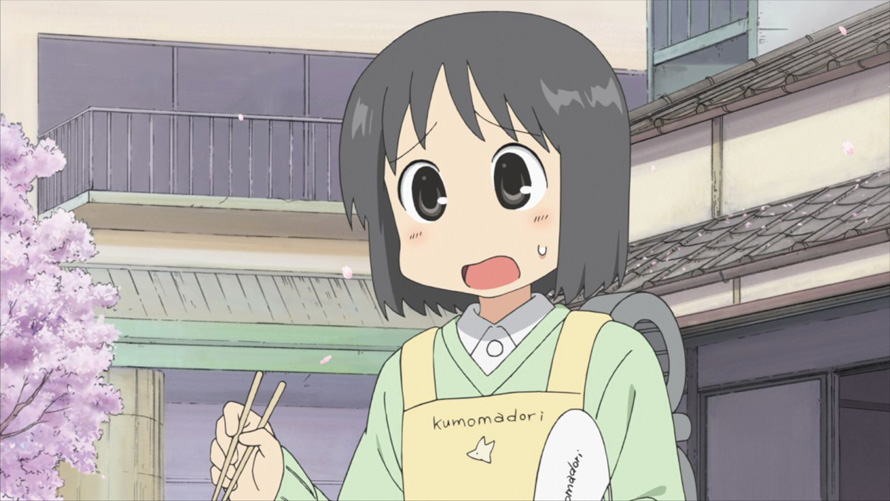
I think a particular scene perfectly sums up the Nichijou experience with gusto: Hakase attempts to catch a piece of popcorn in her mouth, only to smack Sakamoto with the entire popcorn bucket when she fails to do so. The way she relays her frustration is so out there you can’t help but laugh. Nichijou is ultimately a grade A slice-of-life/comedy anime, but an unusually complex one, built on the simple idea of finding the outstanding in the ordinary or vice versa, and generating a “We’ve all been there” kind of reaction and a ton of laughs while doing so. Comedy can be subjective and really hard to pull of without seeming forced or dull, but Nichijou is ultimately a melting pot of feelings and laughs that can stand the test of time, and that alone is an everyday miracle.
Nichijou is available from Funimation.
This story appears in the December 2019 issue of Otaku USA Magazine. Click here to get a print copy.


